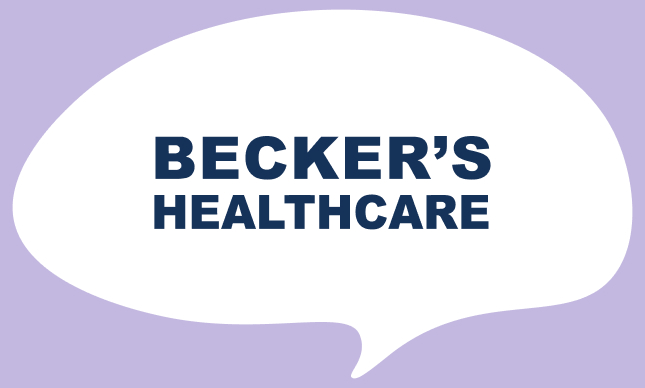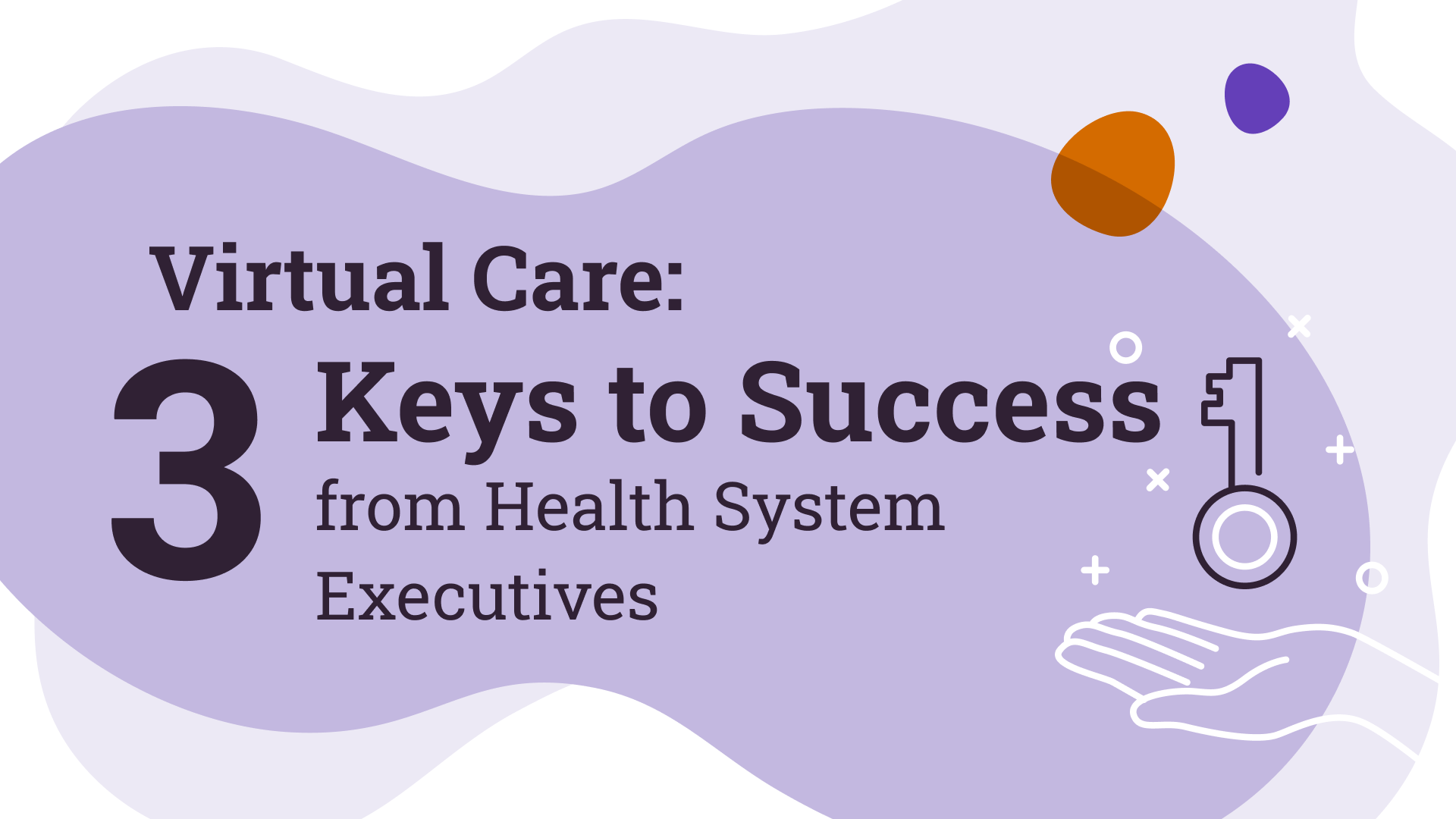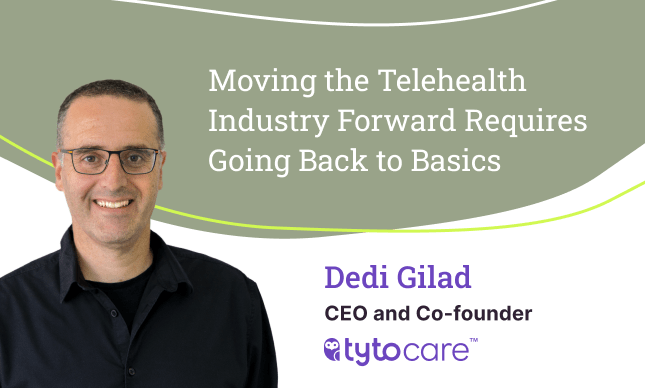What it takes to make patients living room an exam room
Now, physicians are thinking about how they can shape what telemedicine—whether it is a routine exam or care following a hospital discharge—ÂÂÂshould look like going forward.
“How can we leverage the technology we have in front of us—telehealth, remote virtual care, remote patient monitoring, hospital at home? How do we do that well? What do we need to do that well and how do we make sure it can close the gap in health care disparities while we are doing it and give patients a better experience,†said Jennifer Joe, MD, who moderated a recent AMA panel discussion, “Health at Home Models and Strategies,†which was part of a boot camp on telehealth. Dr. Joe is the CEO of Vanguard.Health.
The boot camp also included breakout sessions on creating telehealth value in obstetrics and gynecology or renal medicine. Joseph C. Kvedar, MD, professor of dermatology professor at Harvard Medical School and the American Telemedicine Association’s board chair, gave the opening remarks.
The online boot camp, part of the AMA Telehealth Immersion Program, featured experts and stakeholders from around the country who discussed the potential for long-term telehealth programs, raised the questions that need to be considered as telemedicine evolves and examined the challenges that physicians and patients face moving forward.
The “Health at Home Models and Strategies†panel discussion included a diverse set of industry leaders who were immersed in telehealth well before COVID-19 made it a household word. They included:
- Steve Ommen, MD, a cardiologist at Mayo Clinic in Rochester, Minnesota, who specializes in hypertrophic cardiomyopathy and valvular heart disease and was an early adopter of telehealth. He is also the associate dean of the Mayo Clinic Center for Connected Care.
- David Bardan, vice president and health of commercial U.S. for Tyto Care, which has a handheld device that patients can use from home to use as a stethoscope and otoscope. It also contains attachments for a tongue depressor and a thermometer, provides proper lighting for better imaging and allows patients to use a pulse oximeter.
- Ryan Raisig, MHA, associate vice president for coordinated care and post-acute care at Virginia Commonwealth University (VCU) Health in Richmond.
- Mick Conners, MD, a pediatrician who founded Anytime Telehealth Inc., in 2018 as a way for pediatricians to connect with their patients via telehealth.
- Stacy Lloyd, MPH, the AMA’s director of digital health and operations and the vice chair of VHL Alliance board of directors. She shared her telehealth experiences as a patient.
Intervening early for better outcomes
Several panelists discussed the important role telehealth provides in allowing patients to more easily connect with doctors and other clinicians when appropriate. This can make some visits less burdensome for the patient.
At VCU Health, remotely monitoring patients with type 2 diabetes and other chronic conditions has allowed patients to seek care earlier, when it is easier to treat what is going on, Raisig said. For sepsis patients they have remotely monitored, there’s been a 63% decrease in readmissions.
For a physician like Dr. Ommen whose unique expertise is sought by patients from around the country, telehealth allows him to connect with them via video when appropriate, saving patients timely, costly trips to Minnesota.
For Dr. Conners, providing telehealth in the pediatric setting is a way to provide some equity in the system and a way to ensure that kids have continuity of care when they may have parents who work minimum wage jobs and are unable to take time off work to get to traditional pediatric office.
- The mantra of we want to catch things before they become so difficult is true across the care continuum,†Dr. Conners said.
- The challenge I see is: How do we continue to push to really get everybody access, the ability to utilize digital health?
- If we keep the patient perspective in view, we will probably make better choices as we move forward.
The Telehealth Immersion Program is part of the AMA STEPS Forward™ Innovation Academy, which enables physicians to learn from peers and experts and discover ways to implement time-saving practice innovation strategies.
The benefits of expanded telemedicine are clear. Join physicians who are advocating to permanently expand virtual care coverage.
Now, physicians are thinking about how they can shape what telemedicine—whether it is a routine exam or care following a hospital discharge—should look like going forward.
“How can we leverage the technology we have in front of us—telehealth, remote virtual care, remote patient monitoring, hospital at home? How do we do that well? What do we need to do that well and how do we make sure it can close the gap in health care disparities while we are doing it and give patients a better experience,” said Jennifer Joe, MD, who moderated a recent AMA panel discussion, “Health at Home Models and Strategies,” which was part of a boot camp on telehealth. Dr. Joe is the CEO of Vanguard.Health.
The boot camp also included breakout sessions on creating telehealth value in obstetrics and gynecology or renal medicine. Joseph C. Kvedar, MD, professor of dermatology professor at Harvard Medical School and the American Telemedicine Association’s board chair, gave the opening remarks.
The online boot camp, part of the AMA Telehealth Immersion Program, featured experts and stakeholders from around the country who discussed the potential for long-term telehealth programs, raised the questions that need to be considered as telemedicine evolves and examined the challenges that physicians and patients face moving forward.
The “Health at Home Models and Strategies” panel discussion included a diverse set of industry leaders who were immersed in telehealth well before COVID-19 made it a household word. They included:
- Steve Ommen, MD, a cardiologist at Mayo Clinic in Rochester, Minnesota, who specializes in hypertrophic cardiomyopathy and valvular heart disease and was an early adopter of telehealth. He is also the associate dean of the Mayo Clinic Center for Connected Care.
- David Bardan, vice president and health of commercial U.S. for Tyto Care, which has a handheld device that patients can use from home to use as a stethoscope and otoscope. It also contains attachments for a tongue depressor and a thermometer, provides proper lighting for better imaging and allows patients to use a pulse oximeter.
- Ryan Raisig, MHA, associate vice president for coordinated care and post-acute care at Virginia Commonwealth University (VCU) Health in Richmond.
- Mick Conners, MD, a pediatrician who founded Anytime Telehealth Inc., in 2018 as a way for pediatricians to connect with their patients via telehealth.
- Stacy Lloyd, MPH, the AMA’s director of digital health and operations and the vice chair of VHL Alliance board of directors. She shared her telehealth experiences as a patient.
Intervening early for better outcomes
Several panelists discussed the important role telehealth provides in allowing patients to more easily connect with doctors and other clinicians when appropriate. This can make some visits less burdensome for the patient.
At VCU Health, remotely monitoring patients with type 2 diabetes and other chronic conditions has allowed patients to seek care earlier, when it is easier to treat what is going on, Raisig said. For sepsis patients they have remotely monitored, there’s been a 63% decrease in readmissions.
For a physician like Dr. Ommen whose unique expertise is sought by patients from around the country, telehealth allows him to connect with them via video when appropriate, saving patients timely, costly trips to Minnesota.
For Dr. Conners, providing telehealth in the pediatric setting is a way to provide some equity in the system and a way to ensure that kids have continuity of care when they may have parents who work minimum wage jobs and are unable to take time off work to get to traditional pediatric office.
“The mantra of we want to catch things before they become so difficult is true across the care continuum,” Dr. Conners said. “The challenge I see is: How do we continue to push to really get everybody access, the ability to utilize digital health? … If we keep the patient perspective in view, we will probably make better choices as we move forward.”
The Telehealth Immersion Program is part of the AMA STEPS Forward™ Innovation Academy, which enables physicians to learn from peers and experts and discover ways to implement time-saving practice innovation strategies.
The benefits of expanded telemedicine are clear. Join physicians who are advocating to permanently expand virtual care coverage.
Click here to read the full article.


